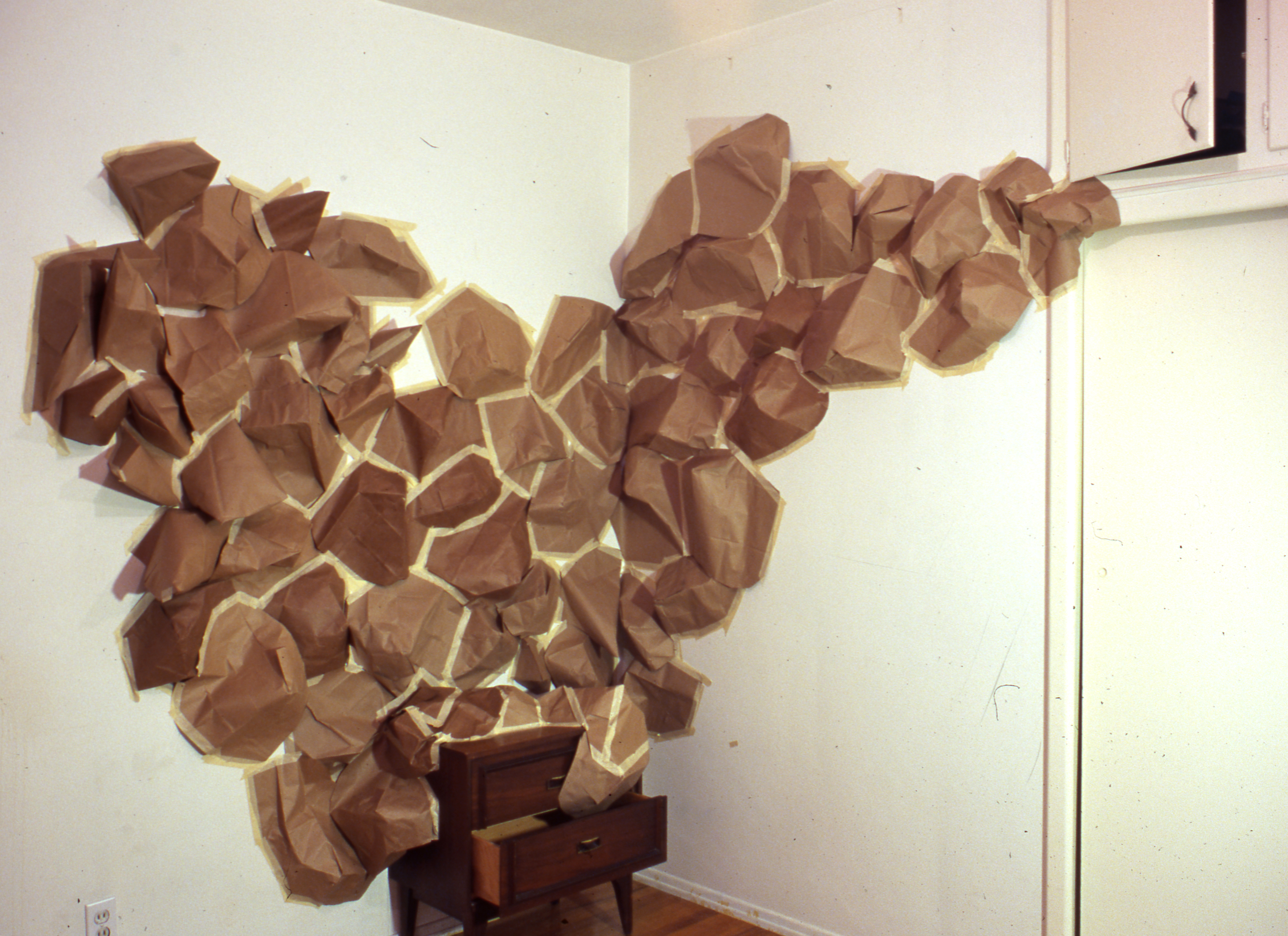Brown paper polygons seemed to creep out of the drawer and onto the side of the wall, creating an amorphous shape.
The presence almost took over the room: a place that was once in her mother’s childhood home, but is now a canvas for Carmel Ni, a fourth-year art student, to assert her own presence and create a monument.
Photos of the project became part of a time-lapse slideshow that documented the paper bag growth coming from the bureau. Ni presented it as a gallery installation called “monumental.”
But the centerpiece of the exhibition previously had a second purpose ““ carrying groceries from Trader Joe’s and Whole Foods.
Recycled or salvaged materials are one way that art students at UCLA create projects on a budget. With costs ranging from $100 for a drawing class to $350 for painting supplies, students and staff have to get creative in getting the most for their money.
“I always try to steer (students) toward projects that fit in their budget,” said Patty Wickman, a UCLA professor of art. “I think (professors) are pretty aware of costs ““ we try to keep costs down.”
Many students tailor their projects to their funds or look for alternative resources. Others, such as fourth-year art student Pat Blocher, wait for financial aid to come in. As a transfer student from a community college, he was educated in a culture of thriftiness.
“I’ve just learned how to make things cheaply, or just not to do expensive projects,” he said.
Instructional fees for classes can help to provide a limited amount of material. For sculpture classes, the $100 amount gives access to blades, scrap supplies and sanding equipment. Though students must purchase any extra necessary materials, the school’s supplies give them a start, said Steven Simon, a longtime sculpture area supervisor.
Professors and staff also help and encourage students to contact companies or vendors directly to receive discounts or cast-off items, Simon said.
The relationship between the UCLA Department of Art and the surrounding community has reaped other rewards.
For years, the sculpture lab has received donations of items from the Hammer Museum, the Los Angeles County Museum of Art and the Museum of Contemporary Art, as well as departments across campus.
With donations flowing in from areas such as theater arts, architecture, engineering and even the medical center, not all of the items are initially art-oriented.
The lab has taken old surgical lamps from the medical center or scrap materials from engineering, based on Simon’s longtime relationship with various sectors of campus. It is then his job to carefully disassemble each part, saving every spring, nut and bolt.
“A lot of what we do is repurposing,” Simon said. “We’re kind of the on-campus surplus area for furniture and extra materials.”
From there, students often use the materials creatively.
“All my years of working here, we have some of the most ingenious undergraduates that are capable of really getting a lot out of a small amount of materials,” Simon said.
For projects outside the scope of class materials, students can apply for a project grant, which is awarded twice a year and is decided by a faculty committee. Awards can range from $250 to $500.
Ni was awarded this grant this past spring and will be using it to complete a photography book that will feature photos, drawings and writings about three different interior spaces.
Beyond the school-sponsored assistance, students have also taken matters into their own hands.
In January, a group of Design | Media Arts and art students created the group Feed Us Fund Us, which barters a gourmet, homemade meal for donations that go toward mini-grants. The students have hosted one dinner so far, where they served homemade gnocchi, sausage ragu and a green salad with balsamic vinaigrette and blood oranges. They collected $90 total, $50 of which will go toward a small student grant.
“It’s an art practice that’s about supporting other artists,” said Ari Marcantonio, a third-year art student who is one of the founders of the group.
Inter-student cooperation and help is also a factor, Blocher said.
“They look out for each other,” he said. “If they have unused materials, they loan it out.”
